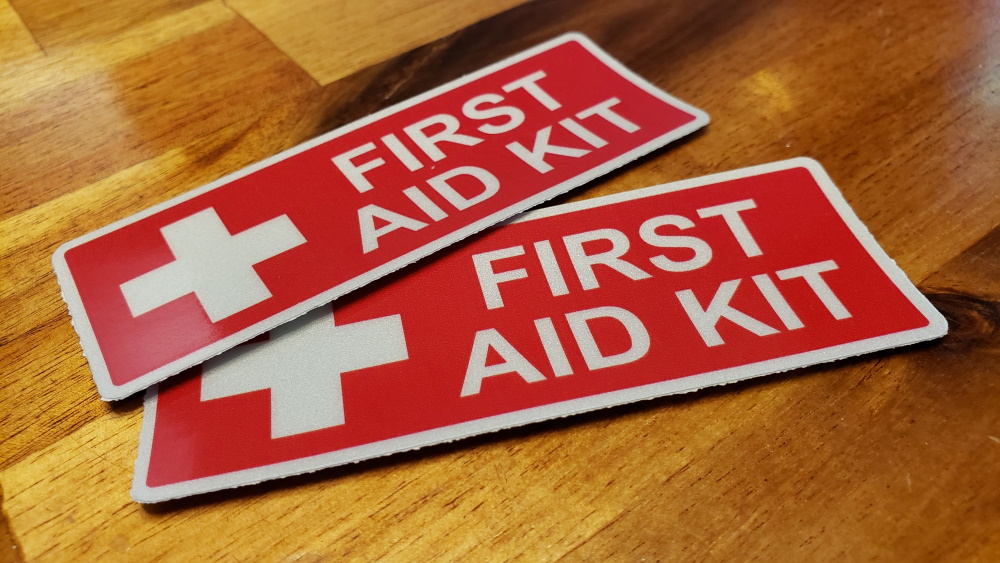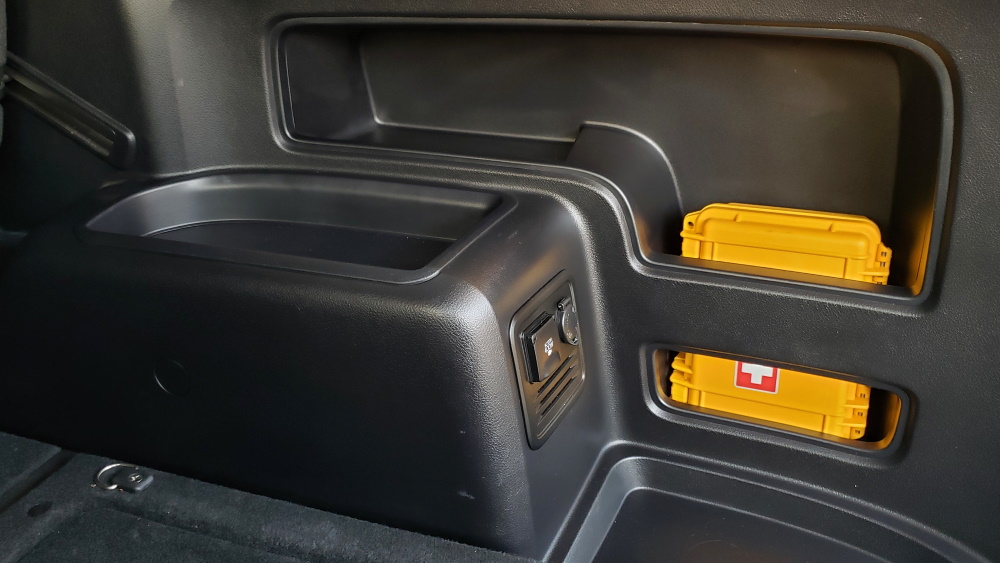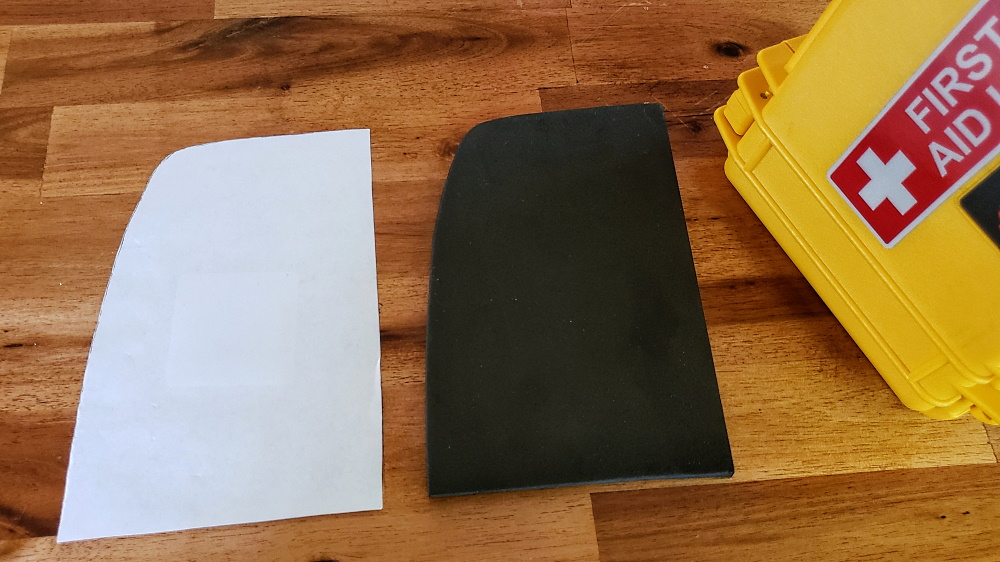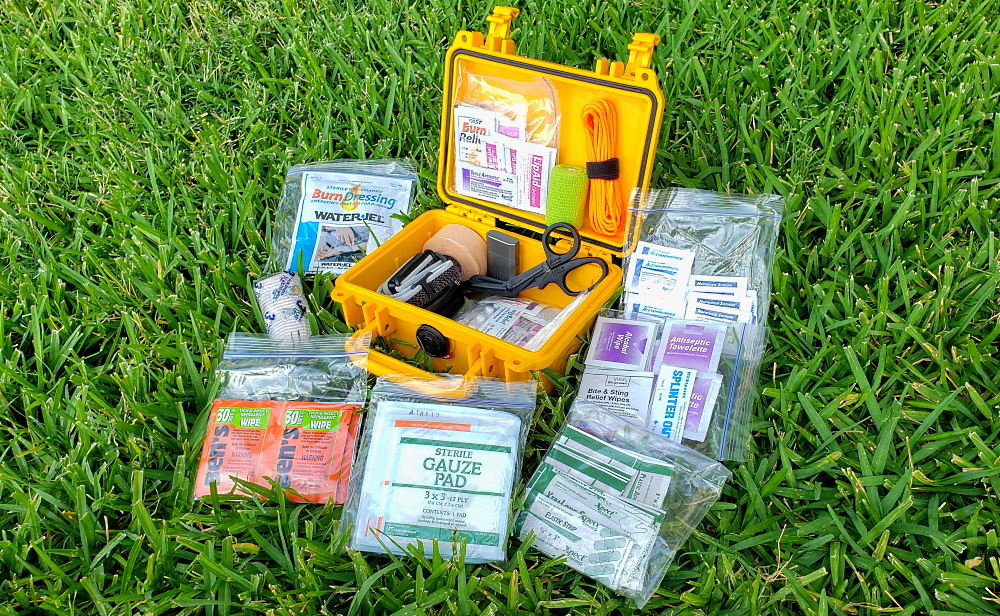
How to make your own high-quality DIY Vehicle First-Aid Kit with a Pelican 1120 case; Waterproof, Durable, and Dependable!
As an Eagle Scout, I’m a firm believer in the Boy Scout motto, “Be Prepared“. Many of us spend lots of time and money preparing our 4Runners for adventures and issues, but may not think about preparing for possible damage to life and limb.
To help you be prepared, I’m going to explain what I put into a DIY emergency / first-aid kit (FAK) that contains the recommended items (and then some) which can be used to handle injuries and ailments that you might encounter while on and off-road.
To put things in perspective, I was glad that I had my FAK when, just a few weeks after putting it together, I came upon the scene of a collision/rollover accident in an area of southern Colorado where there was no cell phone coverage.
Thankfully, the driver suffered only minor injuries that I was able to help treat with supplies from my FAK, while we waited ~45 minutes for the ambulance to arrive.
First-Aid-Kit Case Construction

I started my FAK with the purchase of a Pelican 1120 Protector case for ~$25.
Pelican cases are extremely tough, made in the USA, have an automatic purge valve that equalizes air pressure, a waterproof O-ring lid, stainless steel hardware, and a lifetime warranty.
Dimensions

The 1120 has exterior dimensions of 8.4″ x 6.8″ x 3.9″, and interior dimensions of 7.3″ × 4.8″ × 3.3″.
I opted for the version of the case with no interior foam (1120NF), but Pelican also offers the same case with “Pick N Pluck” foam that can be customized as desired (1120WF).
Color, Design & FAK Sticker

I chose a bright yellow Pelican 1120, in order to make sure it was highly visible. Their cases are also available in black, blue, orange, silver, and tan.
To add to the visibility, and make it easy for others to identify the FAK, I bought a pair of reflective, red and white FAK stickers from an eBay seller for just a few bucks.
First Aid Kit Storage in the 4Runner

I found that size of the Pelican 1120 case makes it almost a perfect fit in the storage spot that is in the passenger side, rear corner of 5th gen 4Runners (provided that a subwoofer isn’t already occupying that area).
The case fits almost snug, but I found that the plastic on plastic between the case and the compartment floor resulted in some rattling.
That was easily remedied by the addition of a piece of 1/4″ thick closed-cell foam that I bought at Michael’s for about a dollar.
Preventing Rattle

I used a trimmed a piece of poster board to make sort of a wedge-shaped template that matched the floor of the compartment and cut a piece of foam to match that.
The rattle was gone after I dropped that foam into the bottom of the compartment, and put the FAK on top of it.
First Aid Kit Contents

Filling your own first aid kit requires many different pieces, but none of them in very high quantities.
I raided the medicine cabinet at home, took apart a few smaller FAKs, and bought some items at local drug stores.
You could start by using the contents of this first aid kit from Amazon and then supplement that with individual items from http://www.mymedic.com.
My Medic also sells multiple levels of fully packaged First-Aid-Kits if you don’t want to build your own or are looking for something specific. They really do have something for every explorer out there and make some incredibly high-quality kits.
Another really good pre-packed First Aid Kit is the one from Surviveware. If you are looking for the ultimate All-in-one first aid kit at a great price, check out the Surviveware kit.
I found that square, zippered snack bags are an easy way to organize and pack related items inside the FAK, and these don’t need to be super strong. They are light and don’t have big zip-lock sealers on the top which add to the weight and size of your kit once it’s put together.
Bandages/dressings:

- Elastic Adhesive Strip Bandage 7/8” x 3″ (4)
- Plastic Adhesive Strip Bandage 1″ x 3″ (4)
- Extra Long Adhesive Strip Bandage 3/4” x 4 11/16” (4)
- Small Adhesive Strip Bandage 5/8 x 1 1/2” (4)
- Fingertip Bandage (4)
- Knuckle Bandage (4)
- Large Adhesive Patch Bandage 2″ x 3″ (4)
- Butterfly Bandage (10)
- Gauze Pad 3″ x 3″ (3)
- Gauze Pad 4″ x 4″ (3)
- Non-stick Pad 2″ x 3″ (3)
- Trauma Compress (2)
- 3″ Elastic Wrap with Clips
- Self-Adherent Cohesive Stretch Tape 2″ x 15′
- Mini Duct Tape (2)
- Elastic Adhesive Tape 1″ x 6′
- QuikClot Combat Gauze (3″ x 12′)
The majority of items in the above list are fairly self-explanatory and used for dressing various types of wounds.
QuikClot products were something new to me, but are items that have been used by first responders and military forces for some time. They are impregnated with kaolin, an inorganic mineral that accelerates the body’s natural clotting ability and produces no exothermic reaction. In other words, they help stop traumatic bleeding very quickly.
The “Combat Gauze” from QuikClot is a 3inch by a 4-yard strip of z-folded gauze that is contained in an easy-open, vacuum-sealed pouch and is good for five years before expiring.
An alternative or addition to the Combat Gauze is the Advanced Clotting Sponge from QuickClot. This is a 3.5-inch by 5.5-inch sterile mesh sponge that contains a hemostatic agent and can be used to stop severe bleeding. It is good for three years before expiring (see package for expiration date). The Advanced Clotting Sponge may be easier to find locally compared to the Combat Gauze, as big box and sporting good stores often carry them.
A couple bandage/dressing items that I’m strongly considering, but have not yet added to my kit are a tourniquet, and an “Israeli bandage“.
Both of these are for serious traumas. I’ve heard good and bad things about different tourniquets, but the CAT 2 Tourniquet gets high marks across the board.
It is very important to know how and when to use a tourniquet, and the decision should not be taken lightly/without education.
An Israeli Bandage is a device that allows for controlling severe bleeding via a pressure applicator, non-adherent pad, and closure bar that can be used to secure the bandage.
Medications:

- Acetaminophen / Tylenol (12 @ 500mg each)
- Naproxen Sodium / Alleve (4 @ 200 mg each)
- Ibuprofen / Advil (12 @ 200 mg each)
- Phenylephrine / Tylenol Sinus (8 @ 5 mg each)
- Loperamude Hydrochloride Anti-Diarrheal (6 @2 mg each)
- Calcium Carbonate Antacid (8)
- Loratadine Antihistamine Allergy Relief (5)
- Bismuth Subsalicylate / Pepto-Bismol (6)
- Medicine First Aid Kit Starter Park (12 Medicines)
The above is a very basic list of medications, which can be expanded if there are specific needs (i.e., “backup” quantities of prescription meds that you or family members require), and/or space inside the FAK allows.
Topical:

- Triple Antibiotic Creme (4)
- Hand Sanitizer Gel (4)
- Lip Ointment (4)
- Burn Relief Gel (2)
- Burn Dressing
- Instant Cold Pack
- Hydrocortisone Cream (4)
- Lubricant Eye Drops (5)
- Alcohol Wipe (6)
- Antiseptic Towelette (4)
- Liquid Skin Bandage (.5 gram)
- Sunscreen
- Bug Repellent Wipes
Various:

- Splinter Out (2)
- Tweezers
- Permanent Marker
- Gorilla Duct Tape (9 feet)
- Trauma Shears 5 1/2”
- Nitrile Gloves (2)
- Derma-Safe Folding Utility Razor
- Victorinox Swiss Army Evolution 18 Multi-Tool
- Butane Torch Lighter
- Nylon Utility Cord (3mm x 15′, 400# or more tensile strength)
- Black Diamond Spot 160 Headlamp
As with the medications included in the kit, various items can change/increase the more that you think about it.
A permanent marker can be used for notes, as well as to mark/monitor swelling.
Duct tape? You can fix anything with it.
A folding utility razor can do scalpel duty if need be, and the multiple tools in a Swiss Army knife can be very handy.
A torch lighter puts out an almost windproof flame (but may not work at higher altitudes, so some waterproof matches like those from UCO are a good choice), and can be used for sterilization as well as fire starting.
Last but not least, a headlamp is excellent for hands-free lighting, and I like the Spot 160 for its performance, size, and the fact that it has a locking power switch that prevents it from accidentally turning on, and leaving you with dead batteries.
CONCLUSION
I mentioned a few future additions for my first-aid kit. If you have suggestions for other items, please share those in the comments section below. Thanks!

Please tell us your qualifications to suggest medical supplies? I want to know what doctor would post this kind of info on the net. I mean you must have medical training to suggest such kits and how to use them. Please instruct us on proper usage as well.
Thanks!!!
Didn’t know you needed qualifications to use bandaids and Tylenol. Stop being a troll and do something with your life.
Likely the same type of person I wouldn’t want treating a random stranger with life threatening trauma and will likely do more harm than good. People love to carry gear but few know how to actually use it.
The internet is useful for many things, but please, for the love of god, become officially certified in NREMT or at least BLS before you get someone killed.
I get the idea of ‘being prepared’, but understand also that you could likely be sued/jailed for performing medicine without a license if you mess something up.
If either of you read the article, you’d realize all these “meds” are what the average person has in their home. That’s unless you go to the ER for a headache, heartburn, or a small cut. Reading comprehension and research go a long way to stop arrogant posting examples as seen above.
If you find this article and see the negative comments above, just ignore them. They don’t know how to use Tylenol or TUMS.
Good info from Nick R. in one of the 4Runner FB groups (thanks Nick!):
“…definitely add a CAT tourniquet, preferably two along with two pressure bandages. Israeli bandages are great, the Olaes bandage is also a great one to look at but basic trauma bandages from North American Rescue are cheaper and will work great as well. Add some extra compressed gauze as a backup to the QuikClot, that will do much better than the QuikClot sponge in the event you need to pack a wound where there is major arterial bleeding. You should find a Stop the Bleed class and go. Many are free and you will learn how to use a tourniquet, pack wounds, and when to use each one. I teach the class and my students are finding lots of value as these are skills that anyone can learn. Really learning Stop the Bleed and CPR well are the two best skills bystanders can have if they are first there at a medical emergency. I would also recommend making a trauma kit that is separate from your first aid kit, that is the one you will grab when someone is bleeding to death so no need for anything that does not stop major bleeding in that kit/IFAK. I would also add 2 mylar blankets for keeping people warm. Trauma victims do worse when cold.
If you want a good online learning tool check out firstcareprovider.org/stb. This is the non-profit organization I teach through and they offer their presentation for free on the site. Prepping in advance will allow you to get so much more out of the class when you go. They have great videos as well in the presentation showing you each skill.”